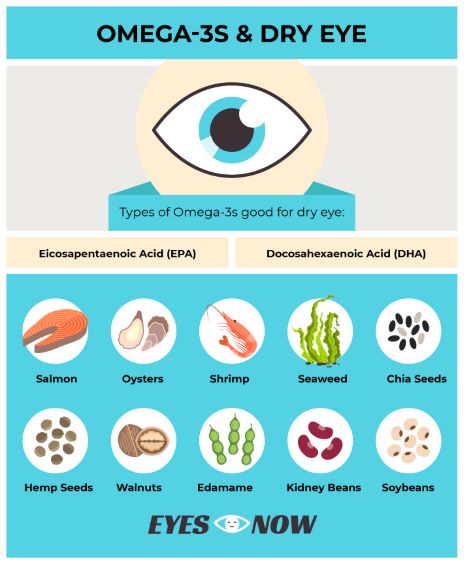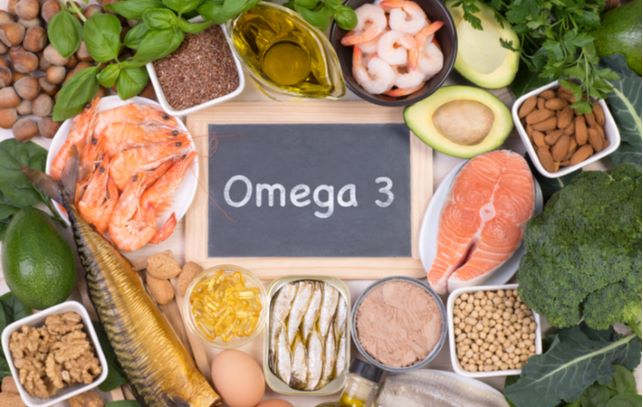Have you ever woken up with stinging or burning eyes? Do your eyes feel fatigued after spending too long looking at a computer screen? If so, you may be experiencing dry eye disease.
If you’ve ever suffered from dry eyes, you’re not alone. Roughly 5-15% of the American population has experienced dry eye disease at some point.
Having dry eyes is no joke. They can be itchy, uncomfortable, and distract you from doing daily tasks. The good news is, dry eye management is easily accessible and available to you whenever you need it.
To be diagnosed with dry eye, talk to your optometrist. They will likely give you an eye exam to determine the cause of your dry eye and determine which treatments are best for you.
Many dry eye treatments are available, but recently, studies have shown that increasing your omega-3 intake can be good for dry eyes.
Keep reading to learn more about dry eye disease and how omega-3 can help relieve your symptoms.
Dry Eye Disease Explained
Before diving into how omega-3s can help with your dry eye, let’s learn about what dry eye is, what symptoms you should watch out for, and what causes this condition.
What is Dry Eye Disease?
Dry eye disease occurs when there is a lack of lubrication and moisture on the surface of your eye. Although this condition can be temporary, it is often chronic.
You should also know that there are two different types of dry eyes. They have different causes, and their symptoms vary. The two types of dry eye are:
- Evaporative dry eye: This is the most common form of dry eye and happens when your tears evaporate too quickly to keep the eyes moist. This is due to a lack of oil in your tears.
- Aqueous deficient dry eye: This type of dry eye occurs when your eyes don’t produce enough tears to keep your eyes moist and functioning correctly.
What are the Symptoms of Dry Eye?
Dry eye disease is associated with many different symptoms. The most common symptoms are:
- Burning, aching, or itchy eyes
- Discomfort wearing contact lenses
- Feeling like something is in your eye
- Blurred vision or eye fatigue
Although less common, you may experience additional symptoms such as:
- Eye redness
- Sensitivity to light
- Mucus in the eyes
- Abnormally watery eyes
- Difficulty driving at night
If you are experiencing any of the above symptoms, book an appointment with your optometrist. The only way to get your dry eye properly diagnosed and managed is to have an eye exam performed by a professional.
What Causes Dry Eye?
There isn’t one single cause of dry eye disease. Instead, your dry eyes may be due to a variety of factors, including:
- Too much screen use
- Poorly fitted contact lenses
- Aging or menopause
- Certain medications
- Dry or windy environments
- Smoking or tobacco use
- Health conditions
- Laser eye surgery
- Certain allergies

What Are Omega-3’s?
Now that we know everything we need to know about dry eye disease, we can begin to learn about Omega-3s.
Omega-3s are a type of fatty acid that are “essential”, meaning they are necessary for our health but cannot be made by our body. Because our body doesn’t make them naturally, we have to get them from our diet, whether it be through food or supplements.
Omega-3s have numerous health benefits and play an important role in bodily processes, including eye health, heart health, and brain function.
Types of Omega-3 Fatty Acids
There are 11 different types of omega-3s, however, the most important when it comes to eye health are are:
- Eicosapentaenoic acid (EPA): EPA may reduce the inflammation in your eyes. It is mostly found in seafood, including fatty fish and algae.
- Docosahexaenoic acid (DHA): DHA is an essential structural component of your skin and the retinas in your eyes. DHA is in seafood and some grass-fed animal products.
Omega-3 & Dry Eye Disease
EPA and DHA have the most potent health benefits when it comes to managing the symptoms related to dry eye.
Studies have shown that omega-3 fatty acids can
- Help to manage dry eye symptoms
- Improve the oil film in the eye
- Decrease the need for other treatments

How to Increase Omega-3 in Your Diet
Increasing omega-3s in your diet can help bring you the relief you need if you’re suffering from dry eye symptoms. But how do you know what types of food or supplements will provide the proper type of omega-3s?
Foods That Are High In Omega-3
The following foods are high in EPA and DHA omega-3s which may help to relieve dry eye symptoms:
- Salmon
- Oysters
- Shrimp
- Seaweed
- Chia seeds
- Hemp seeds
- Walnuts
- Edemame
- Kidney beans
- Soybeans
Try incorporating the above foods into your diet to manage dry eye symptoms.
Omega-3 Supplements
There a few different types of supplements that contain omega-3 fatty acids:
- Fish oil supplements
- Fish liver oil supplements
- Algal oil supplements
- Flaxseed oil supplements
Although there are many supplements available, omega-3 supplements in the triglyceride form are best for dry eye.
When shopping for your supplement you should pay attention to the type, amount, and form of omega-3 in the supplement. For the most dry eye benefits look for supplements that:
- Contain a high EPA to DHA ratio (typically 4:1)
- Have a dose 1200 mg of EPA and 300 mg of DHA per serving
- Are in the triglycerides form
If you have any questions about omega-3’s and your eye health, contact your optometrist! They can give you a professional opinion, diagnose your dry eye disease, and help you manage your symptoms.



